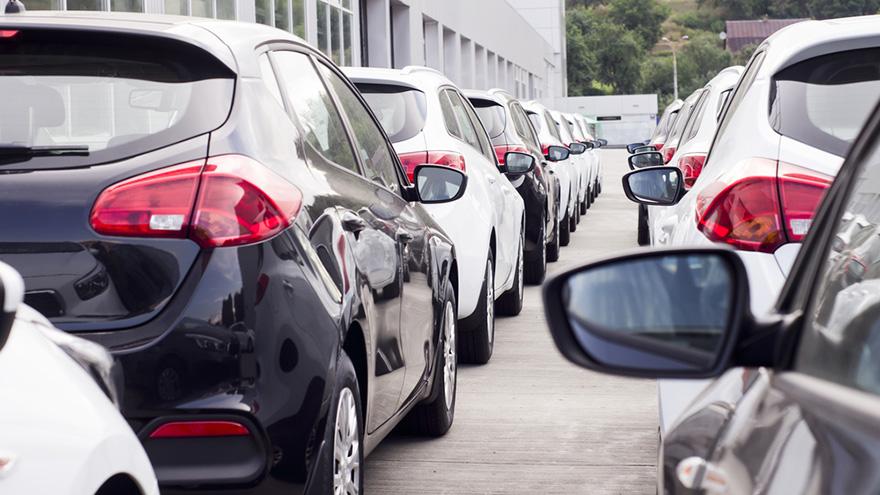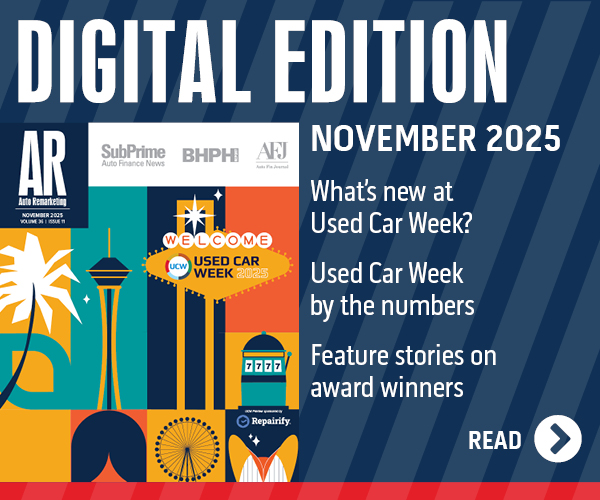COMMENTARY: The dealer renaissance: Post-pandemic opportunities for America’s 1.9 million auto retail employees

By subscribing, you agree to receive communications from Auto Remarketing and our partners in accordance with our Privacy Policy. We may share your information with select partners and sponsors who may contact you about their products and services. You may unsubscribe at any time.
SAN FRANCISCO –
Automotive retail is one of the largest sectors of the U.S. economy, and it is in the middle of a rapid transformation. Going forward, the men and women working in the industry will reasonably be described as high-tech workers, and for good reason.
It’s becoming a market defined by cutting-edge technological innovation and customer experience.
In 1898, William E. Metzger opened the first American auto dealership in Detroit and, astoundingly, the way we’ve purchased vehicles has changed little since. In fact, the selling of transportation hasn’t changed. I almost can picture a camel salesman from eons ago with a customer approach who starts with the same steps to the sale we use today:
Meet and Greet:
Salesman: What brings you in today?
Fact Find:
Salesman: What did you like most about your last camel? What didn’t you like? Are you looking for a light-colored camel or a dark-colored camel? Are you looking for a camel with one hump or two humps? Are you using it to travel locally or long distances?
Inventory Walk and Product Presentation:
Salesman: Let me show you my camels. I have the healthiest camels in the region!
Subscribe to Auto Remarketing to stay informed and stay ahead.
By subscribing, you agree to receive communications from Auto Remarketing and our partners in accordance with our Privacy Policy. We may share your information with select partners and sponsors who may contact you about their products and services. You may unsubscribe at any time.
The steps to the sale haven’t really changed, but the way we communicate and the technology we leverage has evolved. Customers walk onto the lot — perhaps inspired by an advertisement — and begin the purchase process.
They review the available inventory, find their desired vehicle, negotiate a price, and sign the paperwork.
Although more steps are now involved, such as negotiating a value for the customer’s trade-in vehicle, retaining financing, and purchasing appropriate add-ons, the process itself has remained remarkably unchanged for over a century. A buyer walks in, negotiates with the seller, signs some documents, and drives away.
Ironically, while the steps to the sale in transportation haven’t changed, the accompanying products being sold have undergone relentless technical innovation and evolution; indeed, today’s vehicles are effectively “rolling computers.”
But the way we’ve purchased them has remained quite 19th century, especially when we compare it to how consumers purchase virtually everything else in their lives. Conveniently, from their mobile phones, they can explore, learn about, and ultimately purchase anything — be it a new t-shirt or a washing machine. They can visually evaluate a product from every angle, learn its capabilities, and evaluate it against comparable products with the click of a button.
Even traditional brick-and-mortar operations — from grocery stores and big-box electronics chains, to farmer’s markets and medical practices — have embraced digital technologies to transform how they serve customers.
Customers can research and buy a new TV online, and pick it up at the store. They can meet with their physician virtually, and pick up the prescription a few minutes later at the local pharmacy.
Throughout our entire economy, customer experience has become a seamless digital and physical one. And, when well-executed, it empowers the customer to effortlessly transition from the digital to the physical — and back again — throughout their purchase journey.
Long overdue, this digitally powered revolution has come to automotive retail. It was inevitable, for sure, but the COVID-19 pandemic, and the profound impact it has had on consumer preferences and demands, have turbo-charged the transformation. Our industry will never be the same.
Who will succeed in this new era?
The dealers who will thrive in this new era are those that can empower their teams to create the most compelling and engaging digital experiences, and can integrate these new experiences seamlessly into their traditional business operations.
A new generation of technology providers are developing powerful digital solutions to support the automotive-retail industry, and their expertise will prove essential.
However, dealerships must attract, develop, and foster a workforce that can understand, embrace and take full advantage of these emerging technologies.
Market success will be reserved for those retailers with teams able to partner with their technology providers, and together drive continued innovation. For those among the nearly 2 million working in automotive retail today, it represents an incredible opportunity.
As we say in the car business, “People buy cars from people, people buy cars from people they like.” In today’s world, car buyers “like” the dealers and teams that can provide them with the latest and greatest in technology and experience.
Personalized, data-driven purchase journeys
Digital technologies make possible personalized customer experiences at scale. Traditionally, personalization in the sales cycle was limited by the time and inclination the retailer and their team had to learn about — and empathize with — each individual customer. As a result, the benefits of a more personalized approach (e.g. greater conversions, higher sales volume, and boosted profitability) were difficult to achieve as dealerships grew because the path to personalization was solely reliant on the activity level of human capital.
But auto retailers can now leverage a broad variety of first-party data (such as that derived from their display and banner campaigns, or captured via an intelligent ecommerce solution) and third-party data (such as driving pattern data-aggregation services) about their target buying personas, their preferences and their priorities.
This bounty of data can help retailers deliver a highly personalized purchase journey, recommending products, add-ons, and services (during both online or “in-person” engagement) that are highly relevant to each customer. This can have a significant impact on both conversions and profitability. At my company, Modal, we have calculated that dealers who take this personalized, data-driven approach experience an average $500 increase in profit per vehicle.
But the data alone will not suffice. To be successful, dealers must use that data to help shape a compelling, intuitive, online “journey” for each and every customer — guiding them through the entire process. And, because each customer’s purchase journey is their own, dealers must give them control over exactly how (and when) that journey progresses.
This means building a digital infrastructure that enables customers to begin their online experience however they’d like. Some may wish to first look at available vehicles, while others may get a value for their trade in, while still others might start by securing the financing and calculating what monthly payments they can afford.
And, however far the customer progresses, they should be able to easily pick up where they left off seamlessly at a later time — either online or in the showroom.
A sophisticated automotive ecommerce vendor is invaluable in this process, as the data available to dealers can be overwhelming, and keeping up with the latest UX/UI best practices can prove daunting.
Technology vendors can help dealers determine what datasets are optimal for their personalization goals and how to leverage them successfully. The best vendors offer fast-to-deploy solutions that can integrate natively with the dealer’s website, as well as ship with design and workflow elements that support the most cutting-edge ecommerce best practices.
It is an undeniable truth that digital technologies and ecommerce practices are constantly evolving and improving. To position themselves for sustained growth and success in this new era, dealers should prepare to on-board or train internal talent that understands the basics of the following:
- Data integration, analysis, and visualization: Team members that can monitor the ever-changing landscape of third-party consumer data, understand the fundamentals of APIs and other integration methods and leverage best practices for visualizing and reporting upon data in order to identify valuable insights and patterns.
- Digital design, user experience, and testing: Team members that understand the fundamentals of digital marketing and advertising, user experience optimization, and graphic design will be essential. Successful digital retail is a constant process of testing, measuring, and optimizing, so team members that can perform A/B tests on online offers for F&I products for a given set of vehicles — or quantify and compare the performance of several online description options for a given vehicle add-on — will prove incredibly valuable.
- Digital training & empowerment: Every member of the dealership staff can become more successful by taking advantage of the emerging digital retail era, but training and enablement are key. Sales team members can hit their numbers faster and increase their productivity if they understand how to leverage the valuable information the customer provided online before venturing into the showroom.
Desk managers can maximize profitability/PVR if they know how to utilize the customer’s online data to accelerate the conversation. To do this, it is essential that dealers identify and resource staff members to teach and train the rest of the team, so they can take full advantage of the power built into the leading ecommerce technologies.
Auto retailing is in the midst of a first-in-a-century transformation. Fortunately, in this process, it is maintaining the tried-and-true practices and steps to the sale that have served it well for over a century. But the industry is also embracing technologies that can help dealerships deliver the buying experience modern customers now want, expect, and deserve.
Like all technology-powered transformation, this one will never end…it will only progress and, frankly, accelerate. As a result, dealerships, their teams, and any individual interested in joining this exciting industry all have an incredible opportunity to help shape its future. But to do so will require a commitment to develop, nurture, and value the high-tech and creative skills needed to partner with leading technology vendors to continue optimizing the customer experience.
Matt Weinberg is senior vice president of consumer experience for Modal, which provides e-commerce solutions for leading global automotive dealers and brands.


